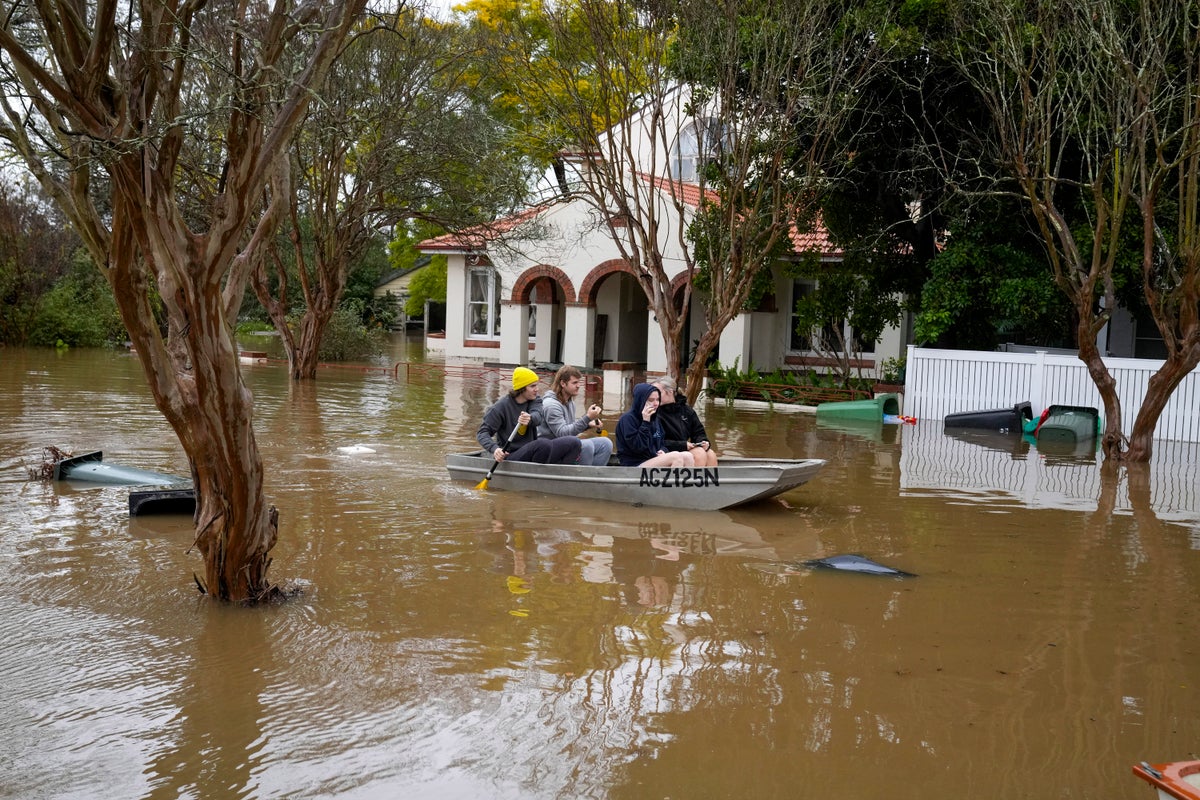
Australians are bracing for more floods, with more than 50,000 people being told to evacuate from Sydney as 800mm of rain fell in New South Wales (NSW) in four days – more than the amount of rainfall London receives in a year.
Hundreds of homes have been flooded in and around Australia’s largest city in what is being called a flood emergency.
Evacuation orders and warnings to prepare to abandon homes were issued to 50,000 people, up from 32,000 on Monday, New South Wales premier Dominic Perrottet said on Tuesday.
Officials have warned residents not to become complacent about the situation, and not to travel unless necessary.
“This event is far from over. Please don’t be complacent, wherever you are. Please be careful when you’re driving on our roads. There is still substantial risk for flash flooding across our state,” Mr Perrottet said.
The NSW state government declared a disaster across 23 local government areas overnight, activating access to financial assistance from the federal government for flood victims.
While flooding had begun to subside in some areas, severe weather warnings for heavy rain remained in place across Sydney’s eastern suburbs on Tuesday. The warnings also extended north of Sydney along the coast and into the Hunter Valley.
Parts of southern Sydney have been lashed by more than 20cm (nearly 8in) of rain in 24 hours, more than 17 per cent of the city’s annual average rainfall, said Jonathan How, a meteorologist at Australia’s Bureau of Meteorology.
Some areas of NSW have seen 800mm of rain in four days according to the bureau, almost a third more than the average rainfall Greater London receives in a year.
The worst flooding was along the Hawkesbury-Nepean river system along Sydney’s northern and western fringes.
“The good news is that by tomorrow afternoon, it is looking to be mostly dry, but of course we are reminding people that these floodwaters will remain very high well after the rain has stopped,” Mr How said.
“There was plenty of rainfall overnight and that is actually seeing some rivers peak for a second time. So you’ve got to take many days, if not a week, to start to see these floodwaters start to recede,” he added.
Emergency response teams made 100 rescues overnight of people trapped in cars on flooded roads or in their homes in the Sydney area, according to state emergency services manager Ashley Sullivan.
Days of torrential rain, driven by the La Nina weather pattern, have caused dams to overflow and waterways to break their banks, causing widespread flooding across Australia. This is the fourth flood emergency in 16 months in Sydney, a city of 5 million people. The floods have so far killed more than 20 people this year, many in New South Wales.







